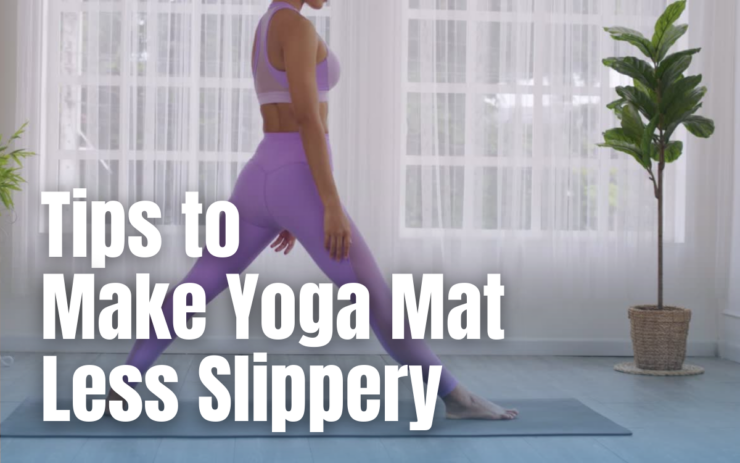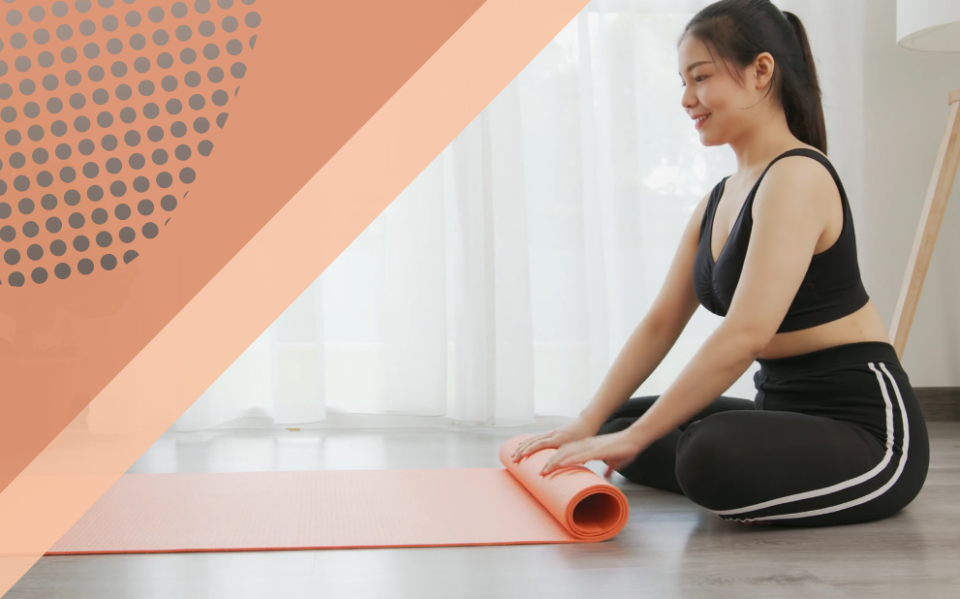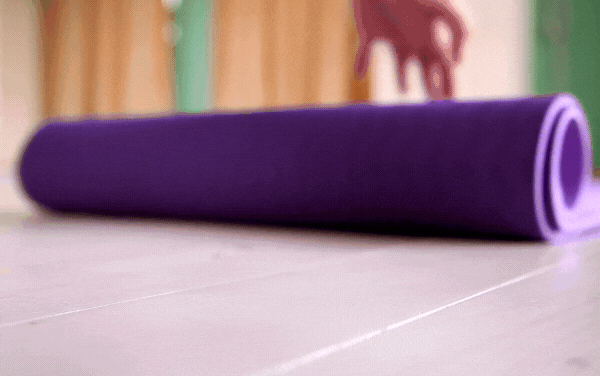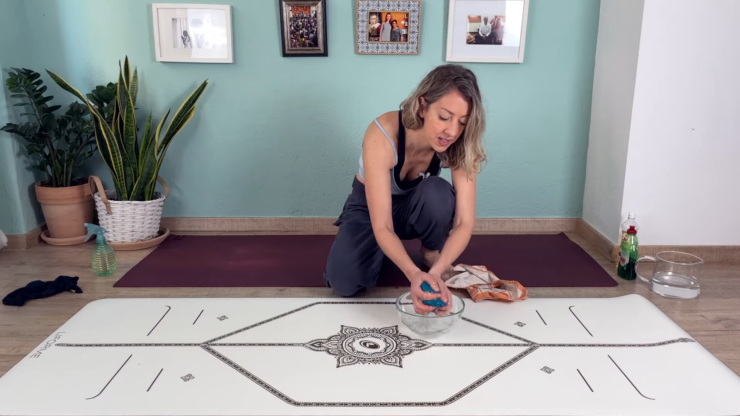Yoga mats made of PVC can often cause their users problems and slip during the exercises. This can cause a lot of headaches for yoga enthusiasts as it makes it difficult to focus and hold the positions. We understand this and want to help you, so today, we are going to talk about how to make a yoga mat less slippery.
Slippery yoga mats are actually a normal thing and a common occurrence. However, this does not make it any less frustrating. Moreover, it can be very dangerous as you can slip during your yoga sessions and hurt yourself. To avoid any type of mishap, continue reading our article, and you will find some useful tips on making your yoga mat less slippery. There is a lot to cover, so let us get started.
Contents
Why Are Some Yoga Mats Slippery?

In order to resolve any type of issue, you need to figure out its cause, and slippery yoga mats are no different in this regard. In the section below, we have listed some of the main causes and potential reasons why your yoga mat keeps slipping when exercising.
They Are Not Broken In
Your yoga mat might be new, and you will need to break it in, especially if you own a brand-new PVC mat. Even some expensive and premium mats require some breaking in, and this is actually one of the main reasons why they are slippery, at first, at least.
Some Materials Are More Slippery Than Others
PVC mats are probably the most slippery type, especially when you compare them to rubber, thermoplastic elastomer, and polyurethane ones. These other types offer a much better grip from the get-go, which is a significant advantage.
You Use Skin Oil or Lotion That Makes You Slip
If you prefer to do yoga right after moisturizing your skin, it is likely that the reason you are slipping is due to your product choice. Some skin oils and lotions might not go well with the material of your mat and can cause slipping issues.
You Are Sweating Excessively
Some people tend to sweat more when doing yoga than others. Some yoga positions can exert a lot of energy and make you sweat more. Whatever the case may be, excessive amounts of sweat can quickly wet your yoga mat and make it slippery.
You Might Be Doing a Difficult Pose
Some yoga poses can be very challenging and, as such, can make you slip. Sometimes, the most logical answers are the right ones, and if the yoga pose you are trying to do is a bit too much for you, it may be the cause of your slipping.
How to Make a Yoga Mat Less Slippery
Now that we have determined the potential reasons why you are slipping during your yoga sessions, it is time to find some solutions for it. In the section below, you will find some straightforward solutions for making the mat less slippery.
1. Practice Harder
As we already mentioned, one of the reasons why PVC mats can sometimes get slippery is because they require some breaking in. The solution for this is pretty obvious, and you need to practice and then some. Once your mat is a bit worn down, it will slip less, and you will have a much better time when practicing.
2. Occasionally Wash Your Mat
PVC mats can benefit a lot from the aging process, and one of the effective ways you can accelerate it is by washing it with water. You can wash it by hand or simply put it in the washing machine on a gentle cycle.
You will require only water, and no detergent or soap is necessary. Just make sure to let the mat air dry properly. These mats are absorbent, so you will have to leave them for a couple of days until they are completely dry and ready to use.
3. Remove Chemical Finishes
Chemical finishes on mats can sometimes be a reason for them being slippery. You can try to remove these finishes with apple cider vinegar. However, you should first check if the vinegar can damage the mat material to avoid any type of inconvenience.
You should be very careful when using this method since you are applying acid to your mat, and it may damage it. The wisest course of action would be to wash it first with an organic liquid soap or dilute the vinegar with water before using a sponge or cloth to rub the mat.
4. Try Applying Sea Salt
This is an interesting method that many yoga enthusiasts confirmed can help. Rub the entire surface of your mat with sea salt, let it sit for 24 hours, and then rinse it with water while rubbing it with a sponge or cloth.
You can also mix the sea salt with water and spray it across the mat if you do not want to rub the salt directly. This method can reduce the build-up on new mats and improve the grip drastically.
5. Try Using a Towel
In addition to these practical steps, it’s always beneficial to understand more about the underlying causes of excessive sweating, especially during physical activities like yoga. Sometimes, the issue goes beyond the mat and might be related to your body’s natural responses.
For those interested in exploring this topic further, there are resources available that delve into the reasons behind excessive sweating and offer insightful information. Check this for a comprehensive understanding of this phenomenon.
If you excessively sweat during your yoga session and that sweat gets on your palms and feet, making you slip, it would be wise to start using a towel with your mat. You can place a standard hand towel across the front of the mat, and it will provide you with a better grip.
Moreover, you can use a towel to dry your hands throughout prolonged yoga sessions. If this method does not help and you keep slipping, try to find some anti-slip product such as Yogitoes Skidlees towel. It is a washable and absorbent towel, and it is designed specifically to grant your mat some extra traction.
6. Choose a Side and Always Practice on It
As we already mentioned, it is important to wear down your mat in order to get more traction. This will be done more effectively if you choose the side on which you will practice all the time and mark it if necessary to always use that side. It will break in the mat easier, thus granting you a better grip.
Final Words
Proper grip and traction are essential when practicing yoga. It is not only the safer way to practice, but it also allows you to take more complicated poses and hold them for longer periods.
We hope our article was informative enough to help you secure better traction when using a yoga mat. If you want to find out more about the secrets of yoga and nutrition, check out our article about yoga and veganism, where we explore the various benefits of both.

Steve is a certified trainer with more than 10 years of training experience and he holds a Master’s in Sports Science. Prior to Boston Rock Gym, Steve worked for two years as a personal trainer.



